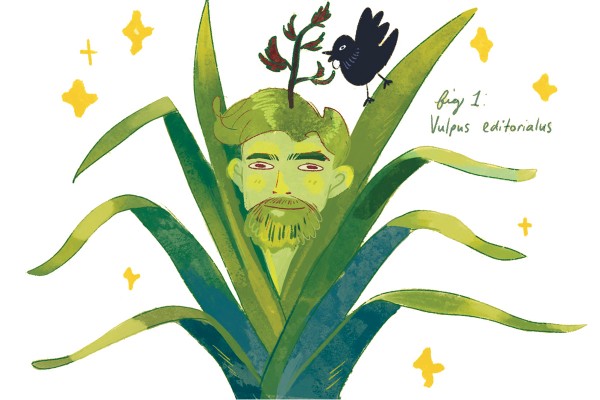Human brains are not designed to sit at a desk and memorise content for hours on end, they’re built to remember stories. When we stop thinking in terms of stories, we’re setting ourselves up for failure. This is especially poignant in the grown-up sciences, which have traditionally felt like they have to be super serious, and can’t pay attention to things like myth and story.
Take New Zealand flax, for example. Now, if you were taught in a classroom that Harakeke is an evergreen perennial plant with somewhat pendulous leaves diverging from the centre and a semi-glabrous peduncle, you might struggle to remember all the details. But it doesn’t have to be that hard; it’s much easier to remember the myth. As the leaves branch out from the centre, the rito (centre shoot) represents the child, protected by the encompassing leaves, the awhi rito (parents), with the rest of the branching leaves representing the rest of the whānau. The furthest leaves from the rito are the tūpuna (elders and ancestors). The story teaches the concept that as this plant grows, leaves that were once the child are pushed further aside, making way for new generations, just like with your own whānau. Much easier to remember.
The same is true for place names, animal names, and everything, really. Before Pākehā explorers came in and started naming (and misnaming) things like Hector’s Dolphin (what does that even tell us? Who the heck is Hector?), Mt. Cook, and Red Pine (Rimu), people had been producing much more informative names and much more memorable stories. Sure, it’s important to know the Pākehā names for these things so that we can all talk about them, but if you actually want to know about these things in a way that doesn’t require rote memorization, give the myths a shot.
Even the Latin names are a bit easier to remember. Once you figure out a few dozen Latin words, you’ll realise that a majority of scientific names are cobbled together from the same 30-or-so pieces. And if you can understand what the Latin names mean, they stop being some sort of arcane, snobbish dialect and can start to tell you some charming and informative stuff about the critter you’re looking at. Like how “gastropod” (snails) actually means “stomach-foot”, or how “Tyrannosaur” means “terrible lizard”. Or Rimu’s Latin name: Dacrydium cupressinum. That’s a tough one to remember, but it basically translates to “Teardrop, Cyprus”. This tells you what a notable part of the tree looks like, and the broader group of trees it belongs to. It’s way easier to read that way.
The scientific nomenclature for stuff seems daunting, but it’s a beautiful system. Everything has a sort of name-based address book, which, if you can read it, describes how the entire living world is connected by biology. Sure, Latin is a new language you have to learn, and it’s a language you should learn, but it’s not the only one. For every animal, there’s the name we call it in English, the name we call it in Latin, and the name given to it by the people who saw it first. And each of these names are important, they each tell a story about what that piece of the living world meant to the people who thought they’d “discovered” it, and the stories woven into these names are far, far easier to remember than the names themselves. And better yet, more often than not, these stories are fun to tell.



